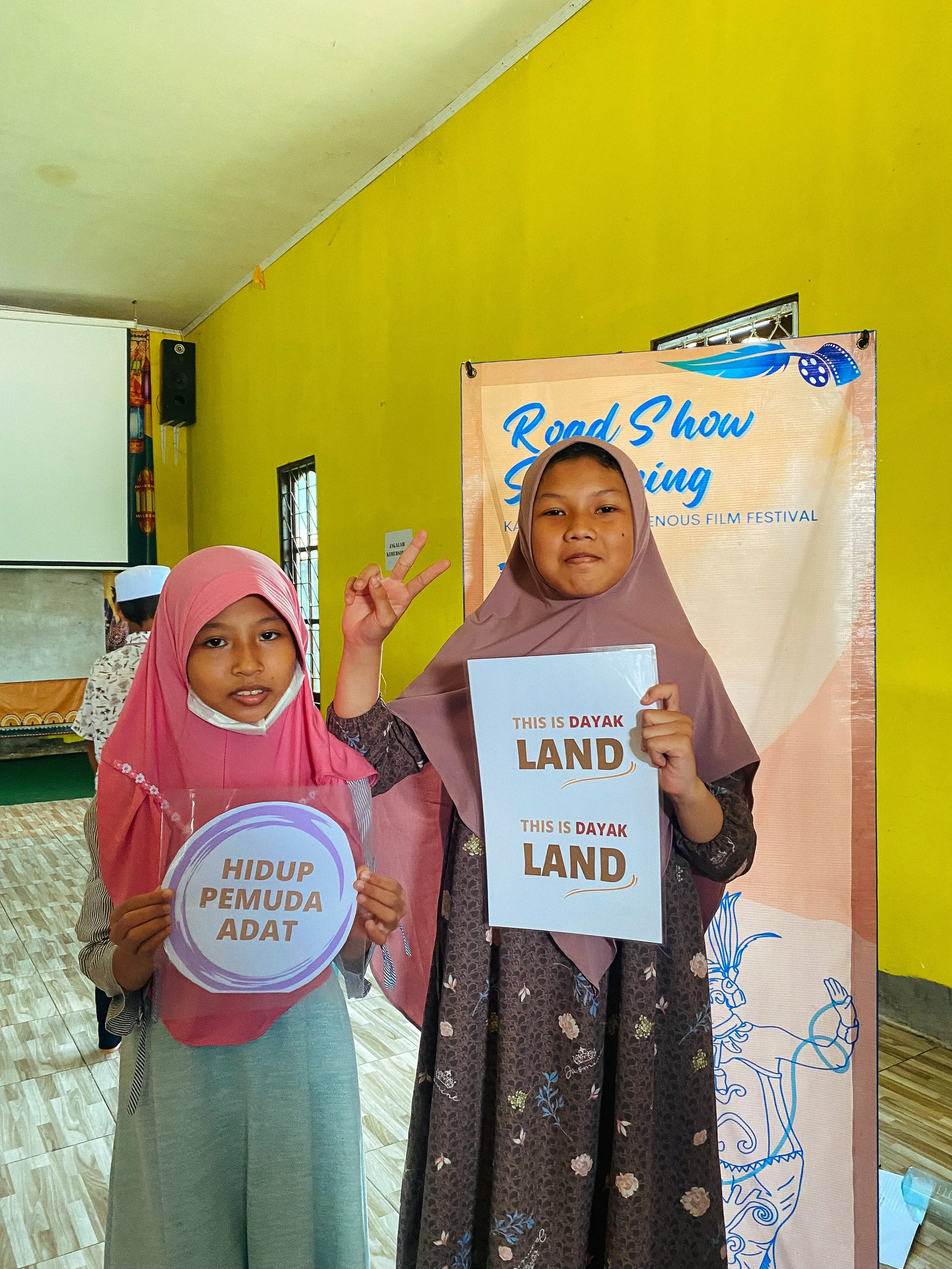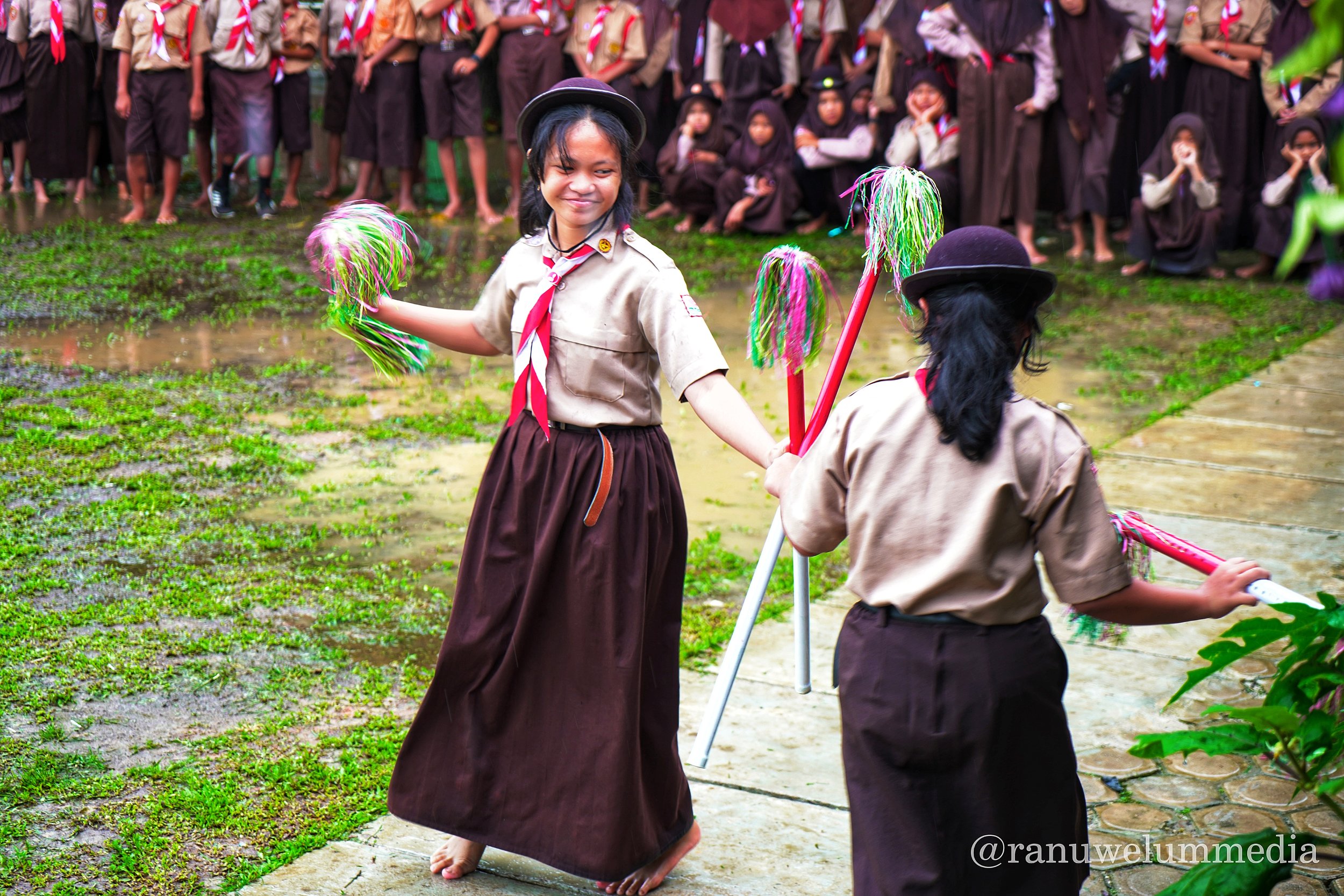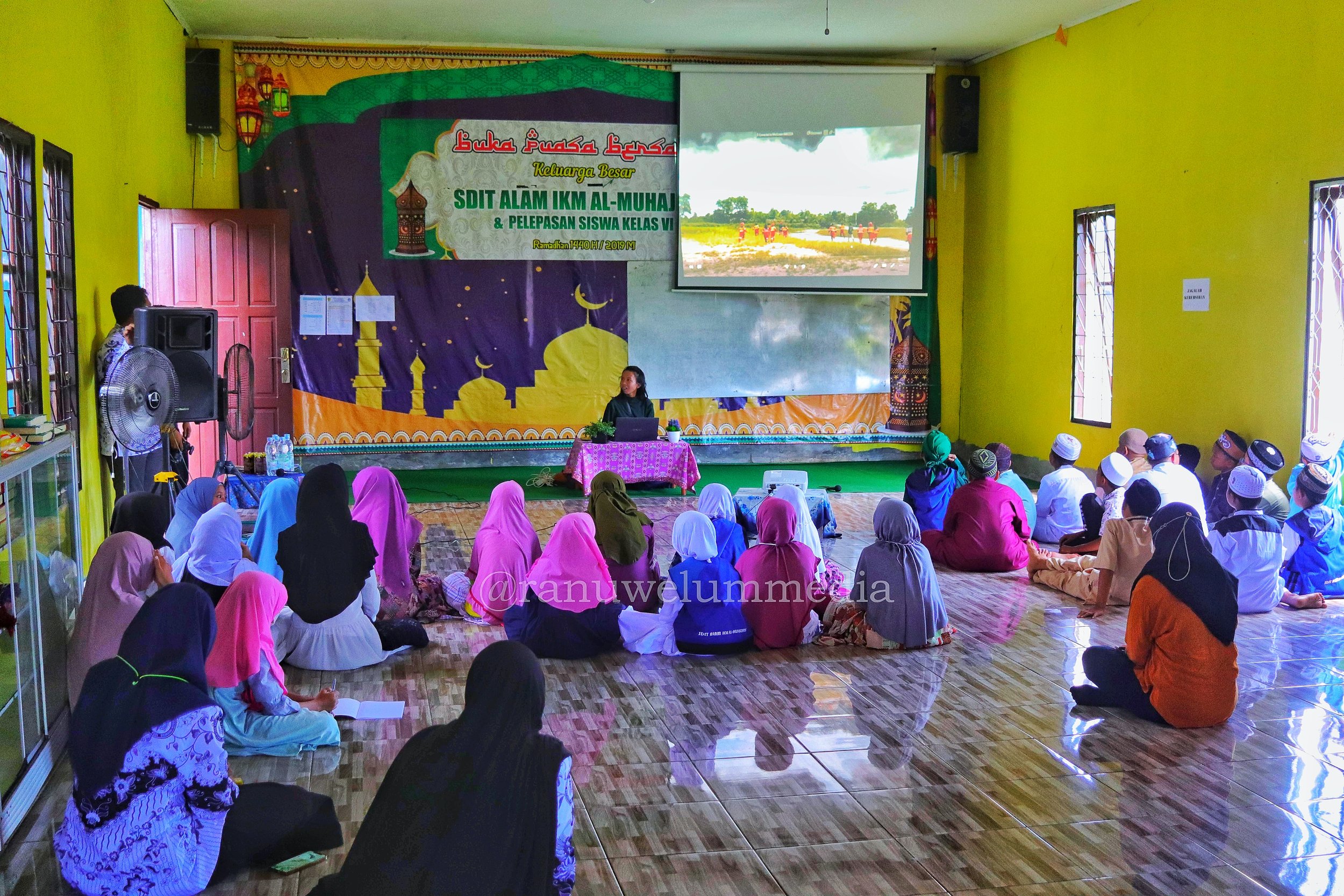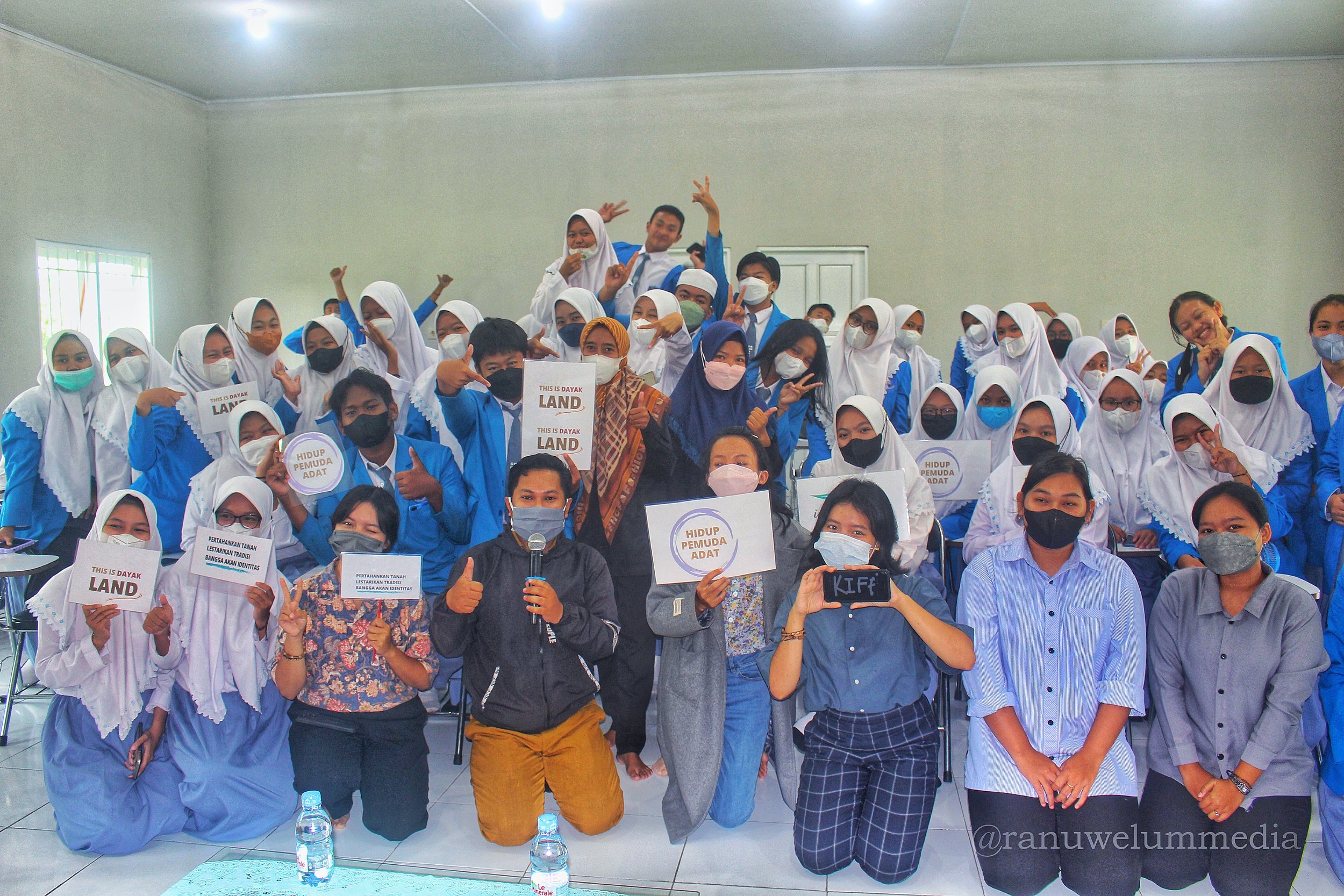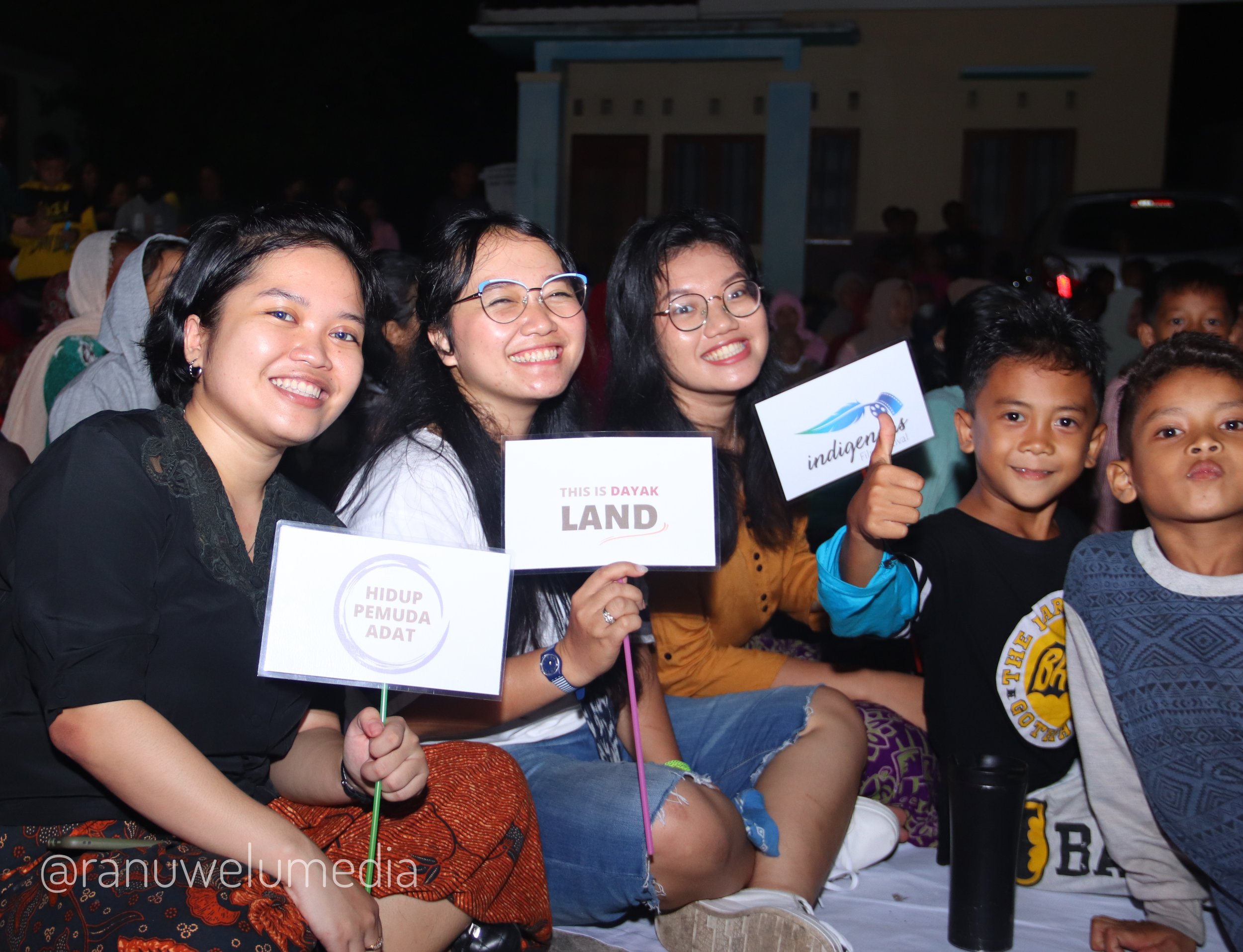Early in the morning at 5 am on 13th August, Kalimantan Indigenous Festival Film (KIFF) team consisted of Muhammad Andi Hamka, Roro, Voven, Rizky and Windi got in the car and drove to Katingan. The unfavorable weather conditions along with the heavy rain along the way did not affect the team's enthusiasm to carry out the activities that had been scheduled long in advance.
That day was a moment for KIFF presented at SMPN 1 Katingan Tengah in Tumbang Samba. It took almost 4 hours till the team arrived at the destination. At the school, they were greeted enthusiastically with traditional dance and drum band performances from students. The event followed with film screening. Most of the films shown today were about environmental destructions and land issues, so the team had an open discussion with students regarding the issues. “Today was great and it was such an important event. By watching the films I learn so much about Kalimantan and the issues around, “said Sindy, one of the students.
Tumbang Samba was one of the destinations of the roadshow film festival. For the whole month, we visited ten villages and schools in total; all located in four different regencies. By the end of the roadshow, there were total 1,091 people participated in the festival. This was such a good number of the audiences considering some areas still had regulation on the public event due to the increase of Covid-19 cases.
While doing the roadshow screening, I once again recalled how we first started the film festival. Back then in 2015, it was uncommon to see films or videos made by the locals to be played on the big screen. It was also uncommon to see the Dayaks were talking in front of the camera, on top of that, speaking about their culture, wisdoms and concerns related to the policies and companies’ invasion. For eight years, Kalimantan Indigenous Film Festival has been playing pivotal roles in raising the voices from the grassroots communities, specifically the Dayaks, to global audiences. We have conducted over 100 film screenings and eight international film festivals which reached to millions of people all over the world while bringing indigenous filmmakers on the stage to talk about their works and passion.
This is an era where people can access internet easily and spend more time on social media. Three top social media apps such Instagram, YouTube and Tiktok have become a video-sharing tools that affect how people communicate and influence each other. Therefore, the existence of indigenous digital storytellers cannot be more important than now.
This is our chance to change the narrative; our chance to be heard and to speak to the world about stories that matter. It is our vision to continue bringing the stories from indigenous communities to you.
You can find more photos from KIFF 2022 here.
written by Emmanuela Shinta & M.Andi
